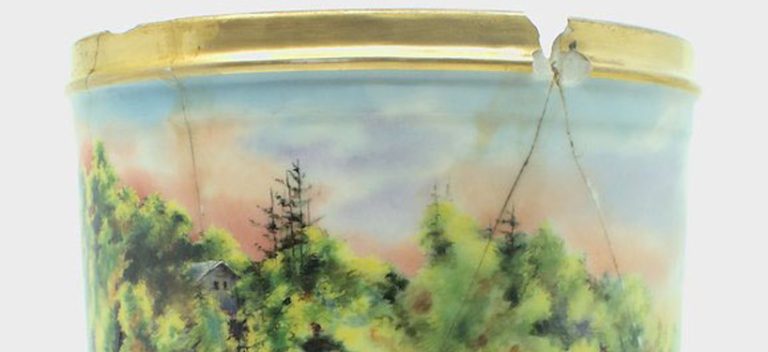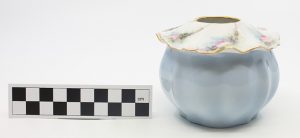As Spring arrives, be prepared to start seeing fresh new plants and flowers poking their heads up through the soil getting ready to bloom. Phoebe Watson loved flowers, and they served as inspiration for her art. In our collection, we have some of Phoebe’s hand painted vases and flowerpots, which she used to liven up the house.

Other than creating vase displays, Phoebe Watson also practiced “window gardening”. Window gardens became a bit of a trend during the 1860s in Europe, as the industrial revolution powered fast-growing cities and urbanization. Having plants and flowers indoors was considered to be beneficial to one’s personal health – an idea that existed long before the Victorians, and still rings true for many people today!
Phoebe’s window garden included a variety of different plants, which she describes in a draft letter to a magazine:
Dear Homemaker
My “pink above a sink” consists of my kitchen window, which faces the south and is deep and wide, its sill high enough to rest the elbows when we gaze out on crocuses peeping through the lawn in early spring. later on a bed of lily of the valley and a border of the lawn done in a green and white leafed plant, of which I do not know the name. All winter the window is joy of hanging vines, narcissus Chnese [sic] lilly […]
Some of these plants can be seen in a painting of the Watson House’s basement, framing a scene of some baking being done in the kitchen.
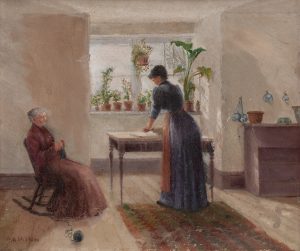
Homer Watson House & Gallery Permanent Collection.
Phoebe certainly believed in the benefits of houseplants. In the same letter to Homemaker, she notes that the greenery is meant to be “of a little cheer” to “the office or indoor worker who might be able to have an opportunity to get a few hours of motoring”.
The legacy of Phoebe’s green thumb is preserved in her hand-painted china, and therefore ensuring it’s stored and cared for properly is an important task. The cracks and wear on this pot may show that it was well-used and well-loved, but it also means that it needs to be handled gently.
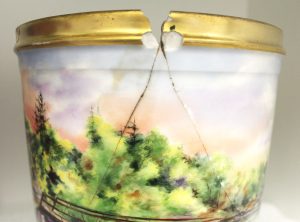
Once broken, a repaired ceramic will never be as stable as an unbroken one. Repaired areas are often the most likely place a piece might crack again in the future. Safe handling involves moving ceramics sparingly and storing them in a place where they’re protected from vibrations. Everyday movement like walking past a display case may cause tiny tremors that jostle or shift the items inside.
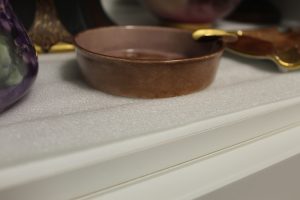
Though the original flowers from Phoebe’s garden have long since wilted away, our collection helps maintain the painted roses and violets that continue to live on vases, cups, and plates. This Spring season, we hope that you can “find a little cheer” in some of the renewing greenery around you!

